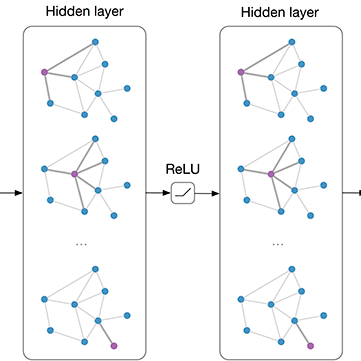The paper is proposing a methodology for modeling a gate-level netlist using a Graph Convolutional Network (GCN). The model predicts the overall functional de-rating factors of sequential elements of a given circuit. In the preliminary phase of the work, the important goal is making a GCN which able to take a gate-level netlist as input information after transforming it into the Probabilistic Bayesian Graph in the form of Graph Modeling Language (GML). This part enables the GCN to learn the structural information of netlist in graph domains. In the second phase of the work, the modeled GCN trained with the a functional de-rating factor of a very low number of individual sequential elements (flip-flops). The third phase includes understanding of GCN models accuracy to model an arbitrary circuit netlist. The designed model was validated for two circuits. One is the IEEE 754 standard double precision floating point adder and the second one is the 10-Gigabit Ethernet MAC IEEE802.3 standard. The predicted results compared to the standard fault injection campaign results of the error called Single EventUpset (SEU). The validated results are graphically pictured in the form of the histogram and sorted probabilities and evaluated with the Confidence Interval (CI) metric between the predicted and simulated fault injection results.
翻译:本文提出使用图表革命网络(GCN)模拟门级网络列表的方法。模型预测了某个电路连续元素的功能性降分系数。在工作的初步阶段,重要目标是使GCN能够将门级网络列表作为输入信息,在将其转换成以图形模拟语言(GML)为形式的概率性贝叶色图后,能够将门级网络列表作为输入信息。这一部分使GCN能够在图形域中学习网列表的结构信息。在工作的第二阶段,模型式GCN以极低数量单个连续元素的功能降分级系数(翻转法)对模型进行培训。第三阶段包括理解GCN模型对任意电路网络列表模型的准确性。设计模型对两种电路进行了验证。一个是IEEE754标准双精度浮动点添加器,第二个是10Gigabit Ethernet IEEEE802.3标准。预测结果与称为“单一事件反常识”和“预测性图像”之间标准注入错误运动的结果(SEUI)是经过验证的结果。




